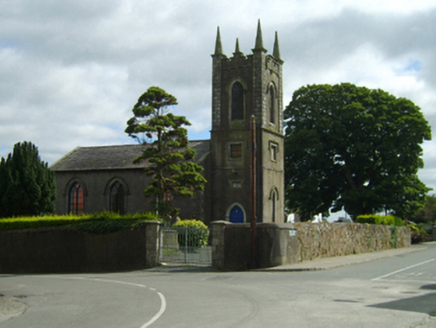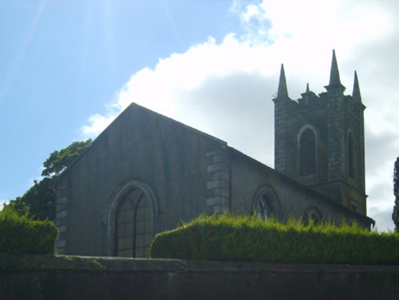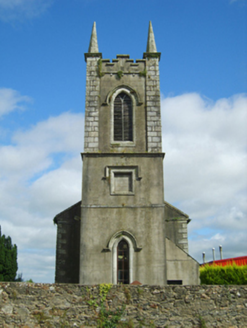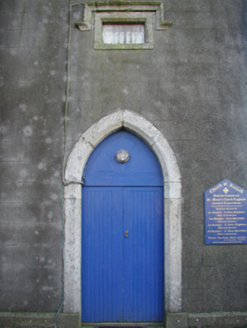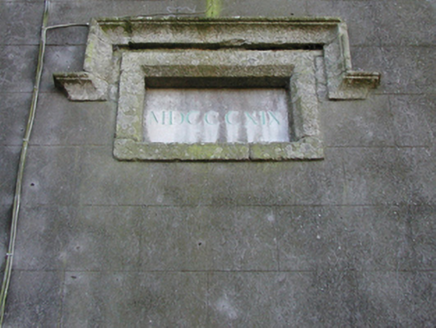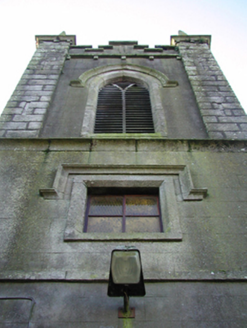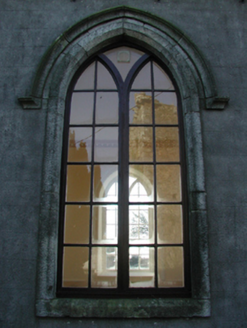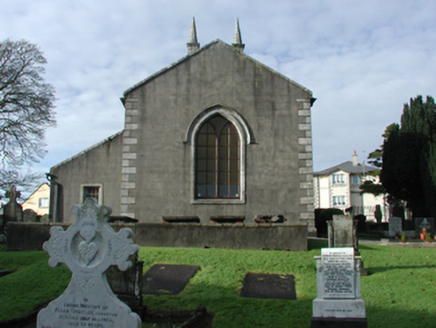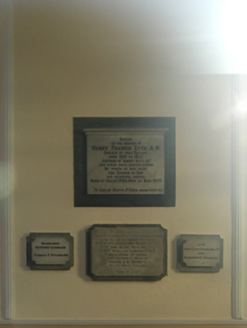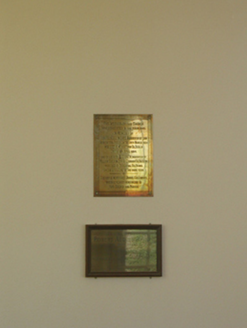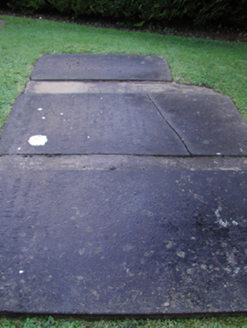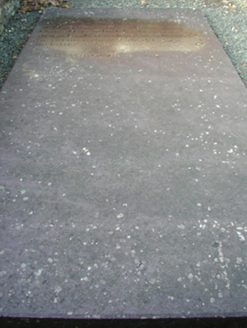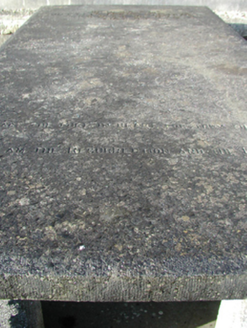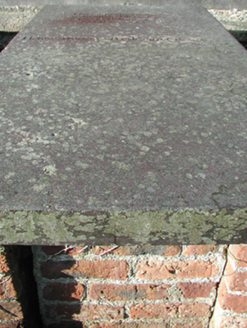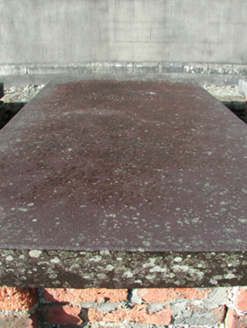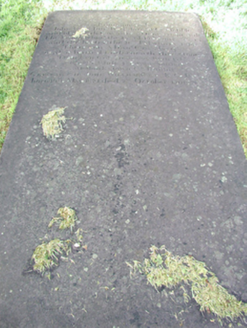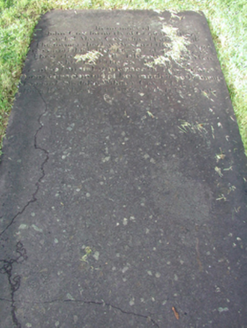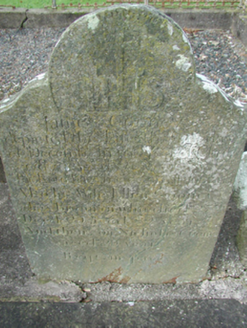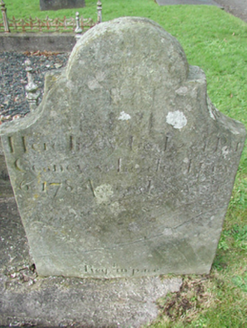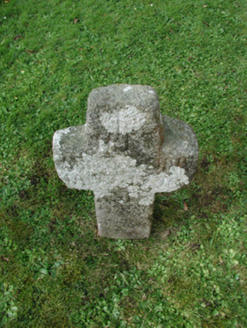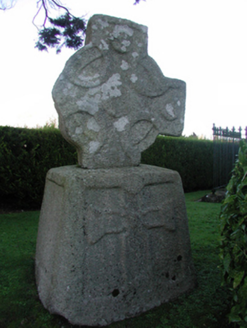Survey Data
Reg No
15615015
Rating
Regional
Categories of Special Interest
Architectural, Artistic, Historical, Social
Original Use
Church/chapel
In Use As
Church/chapel
Date
1815 - 1820
Coordinates
291858, 119737
Date Recorded
24/08/2007
Date Updated
--/--/--
Description
Detached three-bay double-height single-cell Board of First Fruits Church of Ireland church, built 1818-9; dated 1819, on a rectangular plan with single-bay three-stage tower to entrance (west) front on a square plan. Renovated, 1893, with interior "improved". Renovated, 1979, with interior "restored". Rededicated, 1982. "Restored", 1996-7. Pitched slate roof with clay ridge tiles, cut-granite coping to gables, and replacement uPVC rainwater goods on slate flagged eaves retaining wrought iron spandrels. Rendered, ruled and lined battered walls on cut-granite chamfered plinth with rusticated cut-granite quoins to corners; rendered, ruled and lined surface finish (tower) on cut-granite chamfered plinth with repointed granite ashlar piers to corners (bell stage) supporting cut-granite octagonal pinnacles centred on "arrow loop"-detailed crow stepped parapets having cut-granite coping. Pointed-arch window openings with timber Y-mullions, and cut-granite surrounds having chamfered reveals with hood mouldings over framing replacement fixed-pane timber fittings. Pointed-arch window opening to chancel (east) with timber Y-mullion, and cut-granite surround having chamfered reveals with hood moulding over framing replacement fixed-pane timber fitting. Lancet window opening to tower (first stage), cut-granite surround having chamfered reveals with hood moulding over framing replacement fixed-pane timber fitting. Square-headed blind openings (second stage), cut-granite surrounds having chamfered reveals with hood mouldings over framing rendered, ruled and lined infill. Pointed-arch openings (bell stage), cut-granite surrounds having chamfered reveals with hood mouldings over framing applied timber Y-mullions over louvered timber fittings. Interior including vestibule (west) with tessellated "quarry tile" floor; camber-headed door opening into nave; full-height interior "improved", 1893, with timber panelled bowed gallery (west) on cast-iron octagonal pillars, carpeted central aisle between roundel-detailed timber pews, quatrefoil-detailed baptismal font on an octagonal plan, Classical-style wall monuments (ob. 1847; 1927) with polished brass wall monuments (ob. 1889; 1921), timber panelled pulpit on an octagonal plan with timber clerk's desk, carpeted stepped dais to chancel (east) with wrought iron-detailed cast-iron balusters supporting polished brass communion railing centred on timber altar table (1925) below frosted glass "East Window", and decorative plasterwork cornice to ceiling centred on "Acanthus"-detailed ceiling rose. Set in landscaped grounds on a corner site with granite ashlar piers to perimeter having cut-granite shallow pyramidal capping supporting replacement arrow head-detailed mild steel double gates.
Appraisal
A church erected with financial support (1818) from the Board of First Fruits (fl. 1711-1833) representing an integral component of the early nineteenth-century ecclesiastical heritage of County Wexford with the architectural value of the composition, one allegedly repurposing portions of a medieval church '[of which] no remains are visible today at ground level' [SMR WX041-008015-], suggested by such attributes as the standardised nave-with-entrance tower plan form, aligned along a liturgically-correct axis; the "pointed" profile of the openings underpinning a contemporary Georgian Gothic theme; and the polygonal pinnacles embellishing the tower as a picturesque eye-catcher in the landscape. Having been well maintained, the elementary form and massing survive intact together with substantial quantities of the historic or original fabric, both to the exterior and to the interior "improved" as a testimonial to Daniel Cullimore (1804-89) of Monkstown, County Dublin, where contemporary joinery; restrained wall monuments commemorating the O'Grady's of Plattinstown House (see 15700308) and the Stannards of Bricketstown House (see 15703612); a wall monument (1893) commemorating Reverend Henry Francis Lyte (1793-1847), author of "Abide With Me" (1847); and decorative plasterwork enrichments, all highlight the artistic potential of a church making a pleasing visual statement in the shadow of the medieval Taghmon Castle [SMR WX041-008001-].
